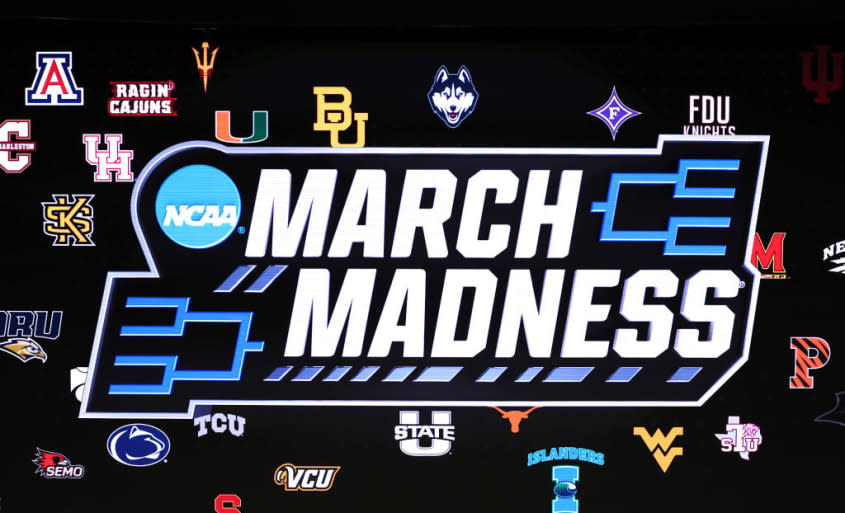March Madness 2023: Everything you need to know

March Madness 2023 has finally ended, and the battle to become the champion of NCAA Division I basketball is complete. From 68 teams down to two, there are always upsets, routs, and unforeseen storylines that emerge, but when the final teams squared off, it was the UConn Huskies that emerged victorious. Here's everything you need to know about the annual tournament:
How does March Madness work?
March Madness is a tournament-style bracket competition of 68 college basketball teams. While the blueprint for determining team seeding is quite complex, the NCAA website provides the basics: The highest 32 teams automatically qualify for March Madness based on winning their conference tournament, such as the Alabama Crimson Tide, which automatically qualified after winning the SEC Tournament. But that's not the only criterion, the NCAA notes, as there are rare occurrences where a dominant team can automatically qualify even if they don't win their conference.
From there, the NCAA's selection committee works to choose the final 36 teams for March Madness based on their overall performances throughout the year. The Sporting News notes that "it's up to the committee members to debate and vote in these teams based on their total body of work," which includes their win-loss record, as well as the strength of their victories and other more advanced metrics.
Once the bracket is decided, the NCAA notes, four teams are eliminated in an immediate opening round, leaving a field of 64 competitors. From there, the tournament shrinks to 32 teams, then 16, then eight, then four, until just two teams are left to play for the title.
What team was most likely to win?
Within the 2023 bracket, there were four number-one seeds: the aforementioned Alabama, the Purdue Boilermakers, the Houston Cougars, and the Kansas Jayhawks (notably, eventual champion UConn was not on this list). Many experts picked Houston to capture its first national championship after finishing second in consecutive years in 1983 and 1984. CBS Sports columnist Gary Parrish believed the Cougars would win because they have a "terrific coach, great guards, experienced players, and NBA [level] talent."
Within that CBS Sports roundup of pundit opinions, three out of nine picked Houston to win it all. Alabama was also another popular choice. Los Angeles Times sports writer J. Brady McCollough predicted the entire tournament, and had the Crimson Tide beating Houston in the championship during a close 69-63 tilt. Indeed, both Alabama and Houston originally had the best betting odds to win, The Washington Post reports.
All four top teams went home early.
Where and when were the games played?
The earlier round games took place at a variety of regional sites, including New York City, Las Vegas, and Kansas City. The Final Four matchups were played at NRG Stadium in Houston.
The tournament officially began with the four elimination games on March 14. From there, the tournament continued on through the final two weeks of March, culminating in the Final Four games on April 1 and the championship game on April 3.
What happened in the tournament?
The tournament definitely earned its "madness" moniker en route to the last team standing. The Final Four were the San Diego State Aztecs, Florida Atlantic University Owls, Miami Hurricanes, and UConn Huskies. This marks only the fourth time in tournament history that the Final Four did not feature a number-one seed, KNSD-TV San Diego notes.
In the end, it was UConn that took the title over San Diego State. The Huskies handily crushed the Aztecs 76-59 to win their fifth national championship since 1999, sprouting talks of a longwinded dynasty.
The road to the Final Four was paved with a series of improbable upsets involving number-one seeds. The most notable was the ousting of the top-seeded Purdue Boilermakers by Fairleigh Dickinson University in a stunning 63-58 upset. Fairleigh Dickinson, who entered the tournament in the lowest-possible spot, became just the second 16th seed in history to oust a number-one team. Another number-one seed, Kansas, was also eliminated in an unlikely upset by the eighth-seeded Arkansas Razorbacks. And mighty Houston and Alabama? Well, they were ousted in rapid fashion, too. Houston fell to Miami 89-75, and Alabama was dispatched by San Diego State 71-64, with both victors in those matches advancing to the Final Four.
Update April 4, 2023: This story has been updated with new game information.
You may also like
Scientists break record for fish filmed in deepest waters to date
Former Manhattan D.A. says federal prosecutors asked him to 'stand down' on Trump hush-money probe


